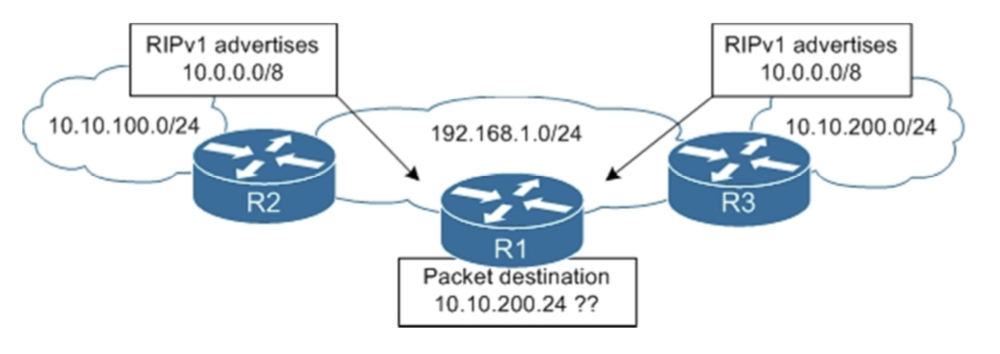Classful Concepts
IP routing protocols are either classful or classless and that determines how they present route information.
Classful
Classful routing protocols (like RIPv1) do not include the subnet mask in routing updates. When an update is sent, the packet contains only the major network information depending on whether it is a class A,B, or C address.
For example, a route to network 172.16.10.0/24 would be advertised as 172.16.0.0/16 because its classful boundary is a class B address. Obviously if you have broken your major network boundaries up into smaller subnets that are more granular than the major classful boundaries, this will not work well and that’s the reason almost all modern routing protocols are classless.
Another classful routing example is illustrated on the right.
Classless
Classless routing protocols (like RIPv2, EIGRP, OSPF, IS-IS, and BGP) include the subnet mask in routing updates allowing for VLSM support and supernetting.
Pingback: Maximizing Network Efficiency with Meraki MX OSPF – clifford network